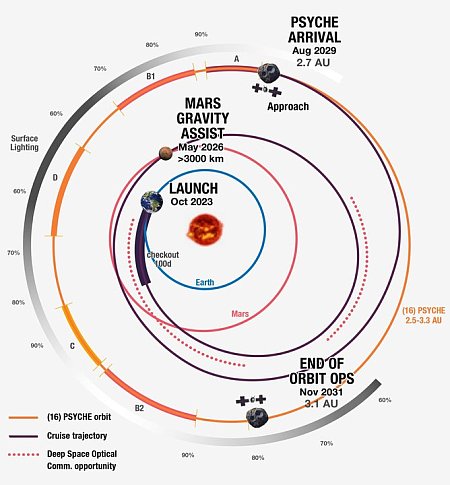Euclid releases new images and first science results
The Euclid science team today released five early science images in connection of the publication of ten papers.
The picture to the right is one of those images, cropped, reduced, and sharpened to post here. From the caption:
In this image Euclid showcases NGC 6744, an archetype of the kind of galaxy currently forming most of the stars in the local Universe. Euclid’s large field-of-view covers the entire galaxy, capturing not only spiral structure on larger scales but also exquisite detail on small spatial scales. This includes feather-like lanes of dust emerging as ‘spurs’ from the spiral arms, shown here with incredible clarity.
Scientists are using this dataset to understand how dust and gas are linked to star formation; map how different star populations are distributed throughout galaxies and where stars are currently forming; and unravel the physics behind the structure of spiral galaxies, something that is still not fully understood after decades of study.
Euclid is a wide-field space telescope that has instruments that observe in both visible and near-infrared wavelengths. Its primary mirror at 1.2 meters is half the width of Hubble’s. More details about these early images and links to the new science results can be found here.
Unlike Hubble, it appears Euclid will not be used as a general observatory, at least initially. Its primary goal is to do a survey of one third of the sky, focusing on extragalactic sources outside the Milky Way. Once this is complete however it is possible the space telescope will be made available for other observations.
The Euclid science team today released five early science images in connection of the publication of ten papers.
The picture to the right is one of those images, cropped, reduced, and sharpened to post here. From the caption:
In this image Euclid showcases NGC 6744, an archetype of the kind of galaxy currently forming most of the stars in the local Universe. Euclid’s large field-of-view covers the entire galaxy, capturing not only spiral structure on larger scales but also exquisite detail on small spatial scales. This includes feather-like lanes of dust emerging as ‘spurs’ from the spiral arms, shown here with incredible clarity.
Scientists are using this dataset to understand how dust and gas are linked to star formation; map how different star populations are distributed throughout galaxies and where stars are currently forming; and unravel the physics behind the structure of spiral galaxies, something that is still not fully understood after decades of study.
Euclid is a wide-field space telescope that has instruments that observe in both visible and near-infrared wavelengths. Its primary mirror at 1.2 meters is half the width of Hubble’s. More details about these early images and links to the new science results can be found here.
Unlike Hubble, it appears Euclid will not be used as a general observatory, at least initially. Its primary goal is to do a survey of one third of the sky, focusing on extragalactic sources outside the Milky Way. Once this is complete however it is possible the space telescope will be made available for other observations.









